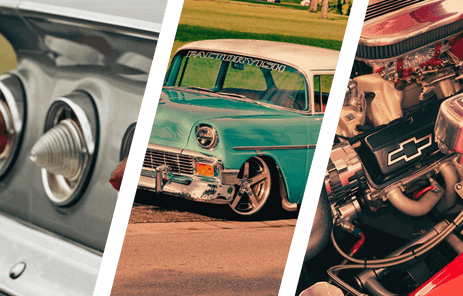Building and selling high performance cars is what Don Yenko was all about. He is rightfully famous for the specially built Corvairs, Camaros and Chevelles that he brought into the world of high performance. Lesser known are the thirty-odd Novas that were built and sold by Yenko Chevrolet out of Canonsburg, PA.

With other cars that Yenko brought to the table, such as the 1969 Chevelle, he was able to order them specially through the GM Central Office Production Order (COPO) system. For example, with a 1969 Chevelle, COPO #9562 designated that the car be built with a 427cui, 425hp L72 engine. This option was not available to mere mortals, who could only get a 396cui, 375 hp L78 engine at most.
Such a COPO order, however, was not available for the 1969 Nova and the same L78 engine for the Chevelles was the maximum that could be ordered. Apparently, there was good reason for this, as the factory engineers felt that the lighter Nova would not meet the company standards for drivability.
That did not stop Yenko or his customers from having the L78 engine replaced by a 427 engine once the car arrived at the Yenko dealership. The cars were also built with power brakes, using front discs and rear drums, and a 4.10:1 ratio, positraction rear axle. Optional equipment included a vinyl roof, power steering and AM radio.
 Even the signature Yenko stripes and badging were optional, so when ordered with a vinyl roof and stripe delete, you would have never know the car from your grandfather’s Nova – until it was far too late, of course.
Even the signature Yenko stripes and badging were optional, so when ordered with a vinyl roof and stripe delete, you would have never know the car from your grandfather’s Nova – until it was far too late, of course.
The owner of this particular Yenko Nova comments on his web site that Don Yenko later described the 1969 Novas as “a beast, almost lethal, a car that they should not have produced…”
Lighter than a Corvette of the day, but using the same engine, would have imparted almost supercar speed to the family sedan. However, even with the heaviest factory suspension components in place, it still took a deft hand (and right foot) to keep the car shiny side up and between the ditches.
Apparently, there were few enough at the time or since, as the owner also says that perhaps only seven or eight examples are accounted for these days.
You might also like
Camaro Fuel Tank Options For Modern F-Body Builds
Tanks Inc. Camaro fuel tank upgrades support EFI swaps, improved fuel control, and reliable performance for street and track builds.



